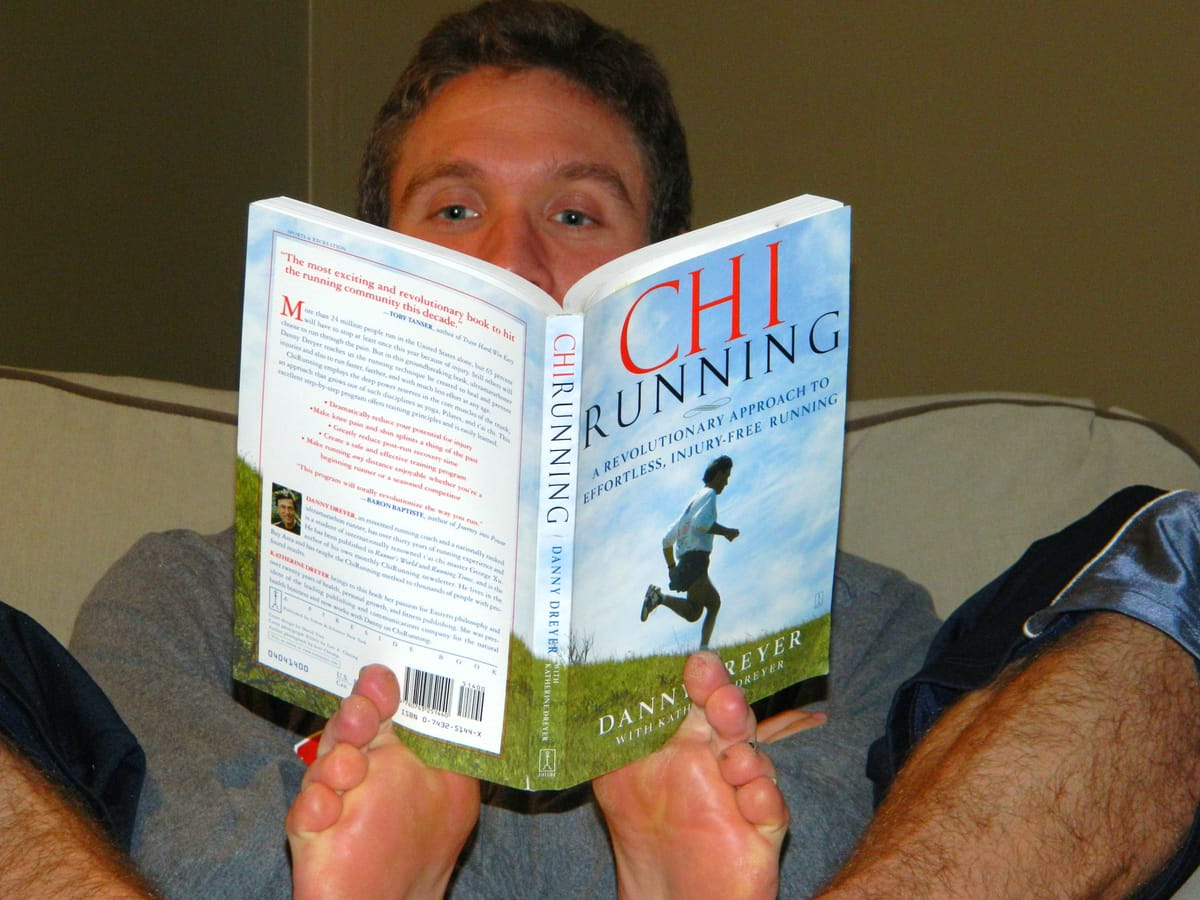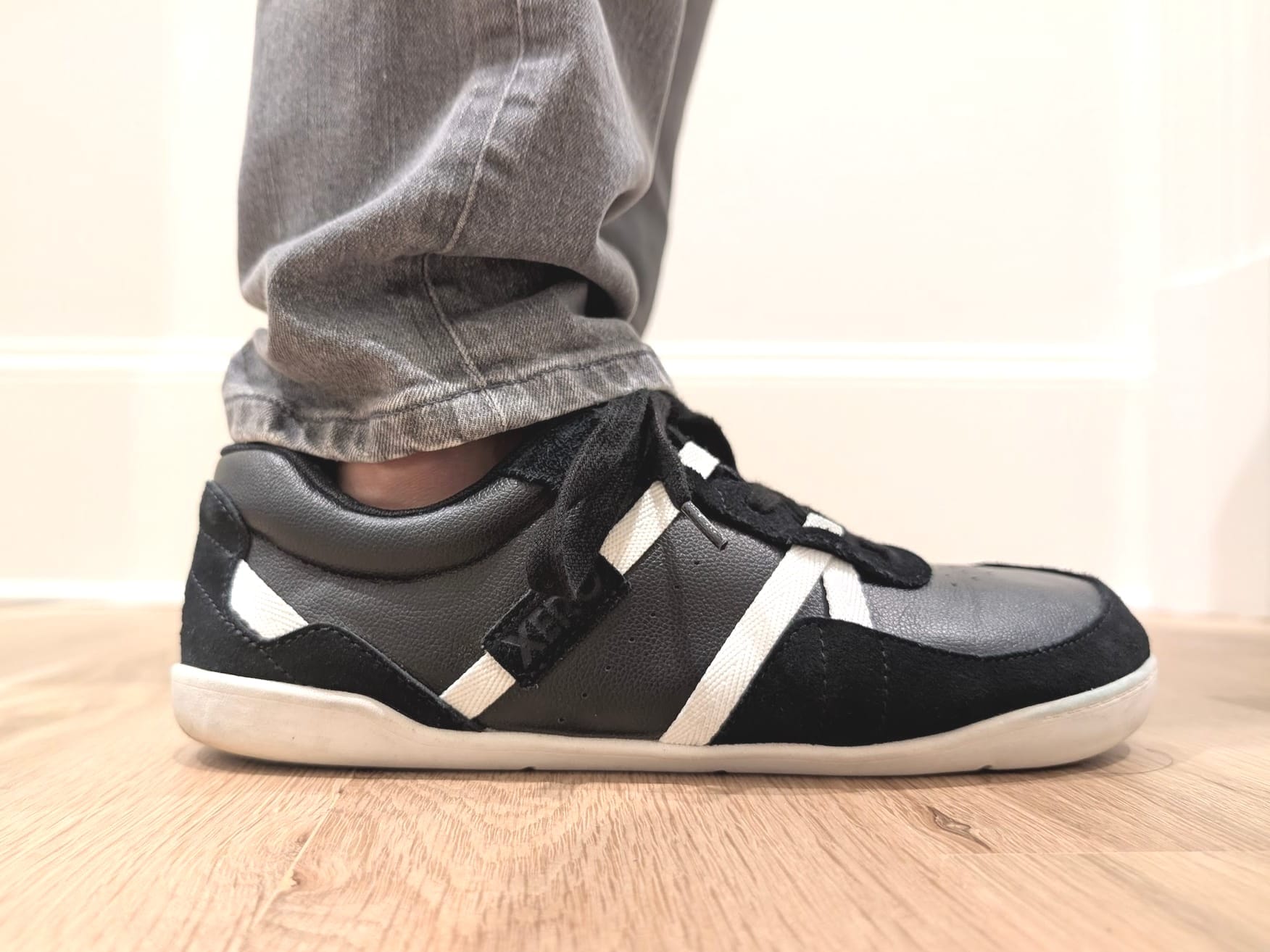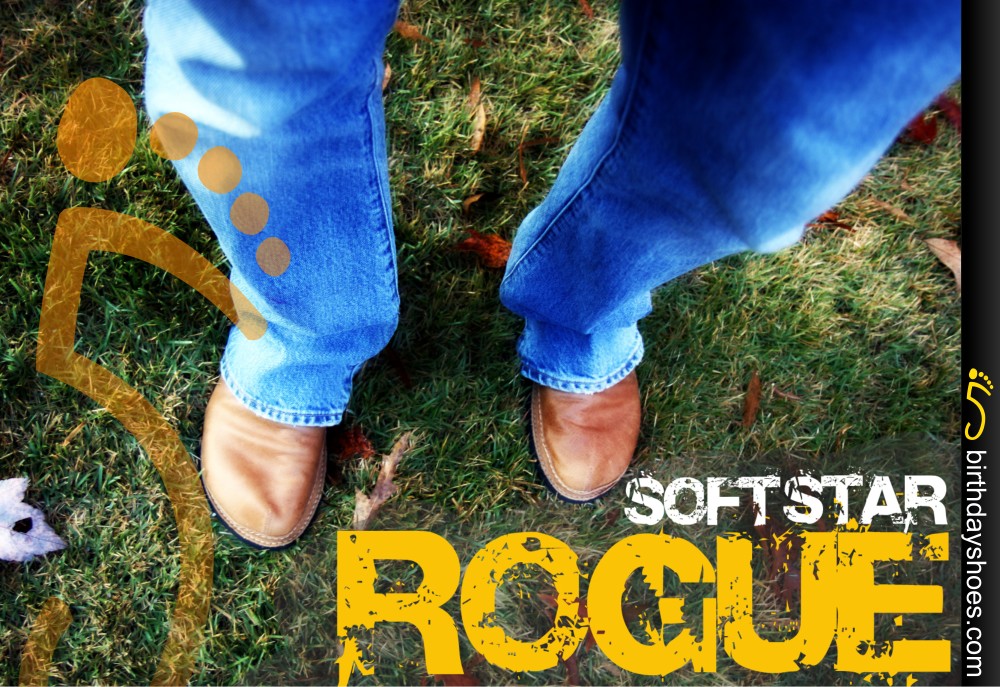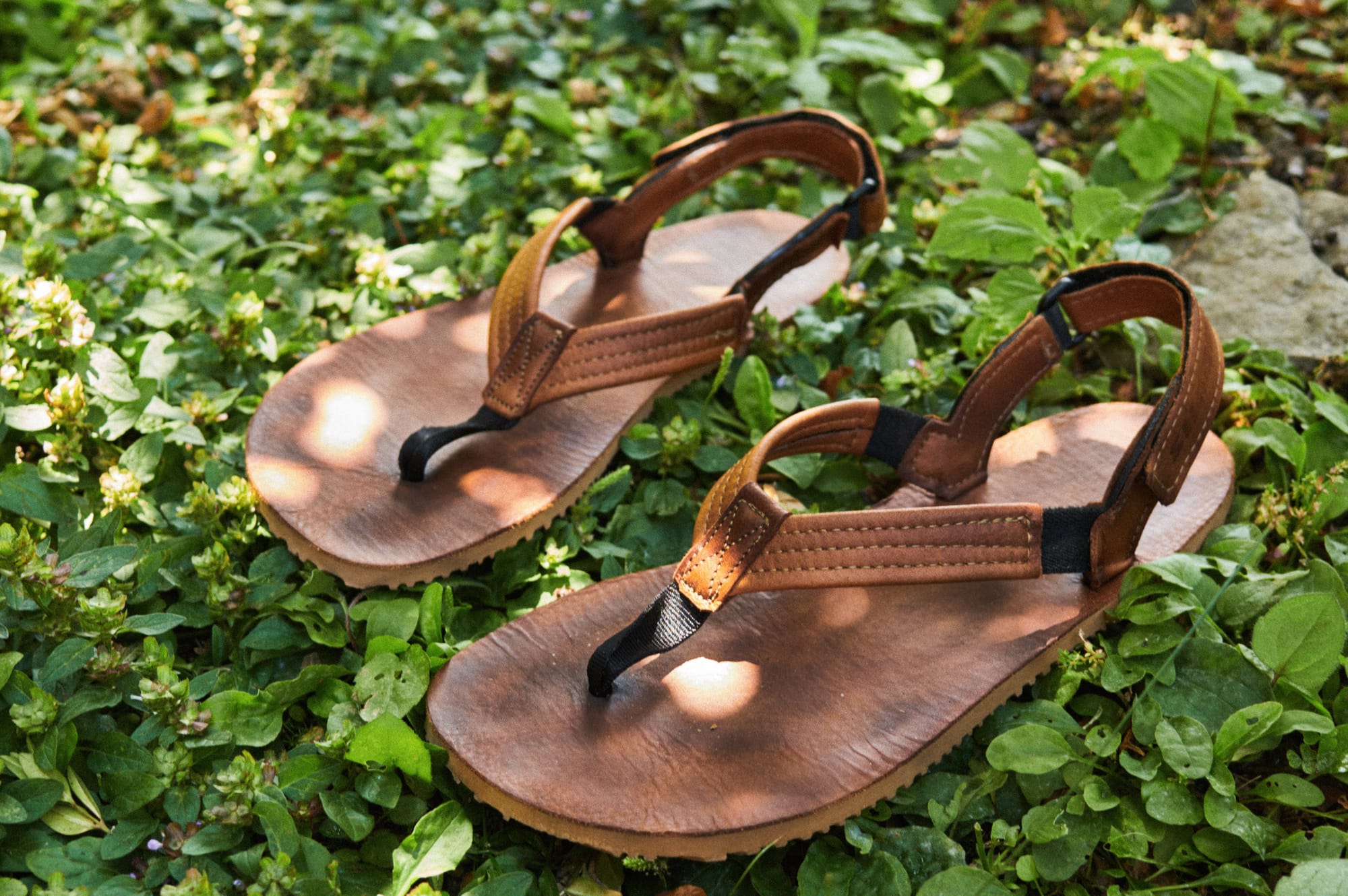ChiRunning, the Book. A Minimalist Perspective.
Just finished reading ChiRunning, the book about the popular technique. When I say "popular" in this context I'm referring mostly to the passion ChiRunning practitioners exude for it. I'm slightly terrified about commenting at all, because in my experie…

Just finished reading ChiRunning, the book about the popular technique. When I say "popular" in this context I'm referring mostly to the passion ChiRunning practitioners exude for it. I'm slightly terrified about commenting at all, because in my experience the more passionate people are about something the more ferocious they tend to be towards critics. Oddly, the fury seems to increase if the thing being criticized actually centers around the very idea of relaxation. Go figure.
And so I suspect it will go with ChiRunning believers, as I do have a fair number of criticisms. Not the least of which because I'm approaching the whole philosophy having already learned several aspects that are put forth and so feel at least mildly qualified to take issue with parts of it. But I'm also coming at it as a minimalist runner, for which it should be noted ChiRunning is not specifically designed. It's a running form that's ostensibly for everyone, which means some of my criticism might admittedly be a little unfair.
But I'm still going to approach it solidly from this angle because there are many minimalist newbies that will pick up this book. A lot of the information will be very useful, while other portions may not work quite as well for minimalists. Hopefully I can parse some of this out with my review.
Keeping loose
Danny Dreyer is extremely positive. Younger me would've rolled my eyes at his repeated suggestions to smile more and the like. But nowadays it's something I appreciate -- and not just because I'm getting older and more sentimental. A lot of injuries and soreness can come from being too tense while running, and any small reminder to be happier and relax will help.
Which leads me to the next thing I like about ChiRunning: the focus on looseness and flexibility in ways beyond mere stretches. There's too much emphasis on basic stretching in broader culture, but mobility is a practice in itself and is of great value to runners especially. I definitely appreciate Dreyer's emphasis on this and I learned a lot from his in-running mobility cues.
Specifically for me:
- Letting one's hips swivel more easily instead of letting them stay stiff and forward.
- Keeping one's foot "stuck" to the ground for longer than you might normally in order to stretch out your stride and handle downhills better.
Personal running plan
Dreyer's approach to designing a running plan is also unique for a coaching book, even if it is incredibly simple. He advocates for the runner designing their own plan and offers you guidelines you how to do so, as opposed to offering a one-size-fits-all-or-most plan as other coaches are wont to do. This fuzzinness is good at times, while at others it can be a little frustrating — which I'll explain shortly.
Overall his plan approach is much better than assuming that everyone can pick up a Hal Higdon plan and get the same results.
The form
As far as the heart of the book — the ChiRunning form and practice — the basics are mostly pretty solid. There's a bit of fluff and repetition to wade through (more on that in a minute), but at its core the ChiRunning form is a good one. Straight posture, tight core, relax everything else, lean from the ankles, land midfoot, shorter steps, pick up your feet, don't push off, let your stride open up behind you, breathe deeply.
Sounds simple, but getting it right is a challenge. There're more details, explanations, exercises, and cues to help the reader/runner get it right.
Only issue I'd take with the ChiRunning form descriptions is a slight dearth in descriptions of foot contact. Granted, Dreyer does describe foot contact to the maximum extent that is probably needed for a traditional sneaker runner, but if you're reading it as a minimalist runner you might wish that there were more details related to the precise movement of the foot upon contact.
Repetition and organization
Having a good basic idea to start with doesn't necessarily mean it's executed well as a book. There is a ton of repetition here. Some of it can be chalked up to intentional repetition learning, of course. It often does help to hear things multiple times to get it into your head. But after a while there are a few concepts where I found myself going, "Okay, Danny, I get it." If he was as disciplined of an editor as he is a runner, ChiRunning the book could've been a third to a half shorter and just as effective.
A related issue is organization. The concepts are seemingly well-organized when looking at the table of contents, but within the book there is a ton of forward and backward referencing. If you have to put "See page XX" several times per page, your book is either gigantic -- making so many self-references necessary -- or your organization could use some reworking. With a book of this length it's not difficult to find other concepts. Taking out the self-references in favor of tighter organization could've cut down the page count greatly.
On shoes
The copy of ChiRunning that I have is nearly 10 years old, a few years before the relatively recent minimalist revolution. Which means his shoe recommendations are primarily geared towards the heavier, more traditionally built-up sneakers. It's possible that a newer edition approaches this differently, with more modern and updated suggestions, but I was unable to find any copies that differed in terms of his preference for more padded shoes. Dreyer has addressed the uptick in minimalist running on his site, but his advice is still hedging. He offers minimalist recommendations "if running barefoot is just not what you're drawn to." Much like other aspects of his philosophy, when faced with particularly challenging aspects of running culture he plays the role of cautious guru and takes a step back to let the student parse things out. Which is fine, but can be annoying for a runner seeking solid advice. It just gives off a whiff of wishy-washiness. Especially since he advocates strongly for other particulars of running.
Diet
I'm not a nutritionist by any means, but I found myself balking at much of Dreyer's dietary advice. Most especially his suggestion of only two major meals a day with no snacking in between meals. The recommendation not to eat very soon before a workout is a good one, but I'm not sure I agree that there should be practically nothing in your stomach for several hours prior. Most of his other dietary advice feels generic, like the kind of stuff you hear from your teachers and parents growing up. The places where he is actually specific (such as the two main meals and no snacking in between recommendations) don't inspire confidence. This area of his book could use a larger dose of the everyone-is-different-and-you-should-experiment-with-what-works-for-you mindset that informed his personal running plan suggestions.
Cross training
Dreyer is approaching the topic of cross training as a runner. He advises against weight lifting and significant cross training due to the bulk it can add. It's almost as if he sees the improvement of any non-running muscles to be a waste of time.
I completely disagree with him here — probably more strongly than on any other point. True, adding muscle will add weight. And yes, you're improving muscles that will not necessarily help with running in a very direct fashion. But I think his dismissal of cross training is short-sighted nonetheless.
Cross training has many benefits. The first and most obvious is an improvement in overall balance to your health and life. You'll work out all those primary and auxiliary muscles that otherwise just get stringier with running. I mention this balance point first and foremost because it feels like an oversight in a running philosophy that uses the word "chi" in its name.
Further, through cross training you will improve your mobility and flexibility. You'll challenge yourself in new, different, and unique ways that running alone may not be able to offer.
Last but not least, cross training can break up a training program to keep your excitement and enthusiasm high. There are of course runners out there who could run 20 miles a day for the rest of their lives and never get the slightest bit bored, but for every one of them there are a few thousand normal people who will benefit greatly by a little variety.
Keep in mind that his target audience is not the elites. Dreyer is trying to reach out to the average Jane and Joe. To brush off cross training so lightly feels irresponsible coming from any kind of coach.
Branding and philosophy
Brace yourself — I've got a mountain of metaphors coming your way.
First, let's talk about chi itself. I'm sure I'm not the only one who, upon reading about a concept like chi, prefers to have it not nailed down too tightly. That is, discussing chi should not be the same as discussing the proper way to stretch one's quadriceps. It is not a concrete concept. Or rather, it should not be a concrete concept. Because it is not science. That's not to say that it is not valid or does not have value, but from where I sit I feel like the mystical suffers for being treated too much like hard science, just as hard science suffers for being treated too much like mysticism.
In this book at least, the very useful application of chi in running seems to wither a little under its treatment. I'd be willing to bet that a large part of that is the commitment of such a big concept to the printed page at all. At times Dreyer does utilize philosophy in very good ways, but then he starts to get too specific with it and that's when he loses me. It reminds me too much of those TV preachers who tell you that for a $200 donation Jesus will grant your wish. I think the idea of chi can — and arguably should — inform many of these movements. But there's some over-reliance on it here, with too much talk at a high level. I just feel like ChiRunning needs a little less of the Chi part and a little more of the Running part.
I feel like I'm not explaining myself well here. So I'll use yet another metaphor. Albert Einstein often used the term "God" when discussing his ideas. Believers and non-believers alike both argued about what he meant by the concept of God; was he a believer or not? But what gets lost in those arguments are his actual ideas. They're obscured by a word. There's a similar thing at work with the word "chi" in many instances in this book. But it doesn't stop at a high level — it's also a problem with the smaller concepts.
The four main Chi-skills he discusses are Focusing, Body Sensing, Breathing, and Relaxing. Notice the capitals. This is Dreyer, not me. These are unnecessary. It may seem like a minor thing, but for me it's distracting. The average reader is going to know what it means to focus, breathe, and relax. And without my explaining I bet most could parse out what it means to body sense.
A concept can gain power, focus, and wider understanding from being identified and named. But it can lose power from being "branded." What I mean is... well, think of Batman. (If you weren't already.) Think of the differences between the Adam West and Christian Bale portrayals. One of the biggest is the West version having a Bat-everything. And of course the show famously jumped the shark with its Bat-shark-repellent. Bale's Batman, meanwhile, is too busy getting stuff done to worry about too many clever names for his devices. Dreyer leans slightly more towards West more than Bale with his concepts.
What I'm getting at here is that it's the concepts that are important, and I think trapping them in big-named terms robs them of some of their vitality and flexibility. He's turning them more into nouns than the verbs they need to be.
A lot of this is semantics, I know. A seemingly small complaint to many. But I'm a former English major so words matter to me (perhaps a bit too much). Then again, I do work in a cubicle while Dreyer's writing books, running for a living, and making presumably tons of money, so what do I know?
Final thoughts
This could have been — and should be made into — a much shorter book. The core itself is solid, and some of the ideas that spring forth from that core are also very good — if at times repetitive or begging for deeper exploration than they get. But in its current state the book is hampered by that repetition and the other faults I've mentioned.
Mind you, this review is primarily aimed at the book. I've never taken a ChiRunning course and have no idea what Dreyer is like as an in-person coach. On top of that I was reading it with a heavy minimalist slant. I'm sure that personalized ChiRunning coaching could do significantly better good than reading a book. Though of course that's true of any fitness book.
Perhaps most challenging for Dreyer and other fitness writers these days is that it's hard to say something on the printed page that you can't already find online. You've really got to have something especially novel to offer in order to stand out. Personally, I think the days of the more "soft" fitness advice books (and soft non-fiction books generally) are coming to an end. Not too long back I picked up a marathon training book from circa 1999 that surprised me with its extreme simplicity. Thirty bucks for a printed version of advice that I could find on the first page of Google search results for "first marathon advice?" No thanks.
Plus my expectations were skewed as I was reading ChiRunning in between Born to Run, Eat and Run, and now Thrive — all more recent books with much more specific information and advice.
In other words: take all of this with a grain of salt. The book is almost a decade old. The internet was around when it came out, but it still wasn't nearly the force and size that it is now. It'd be good to see an updated edition that leaves out all testimonials, addresses many of the changes in the running landscape in recent years, and holds itself to a strict limit of 150 pages maximum. Simplicity is key.
Because here's the thing: on the whole, it ain't bad. There's some really great ideas in here. A good friend bought me the book as an xmas present because they figured I would like it — and they were right. I'd just like to see what an updated version would be like. I have a lot of respect for these concepts, for Danny Dreyer, and most especially for what he's trying to do: decrease injury in runners and generally spread running to more and more people. Maybe I'll get a chance to chat with the man himself when I run my first marathon in Asheville in March. ChiRunning is one of the sponsors, after all.
So for anyone else out there who've read ChiRunning, tried the techniques therein, or attended a course — what are your thoughts?




